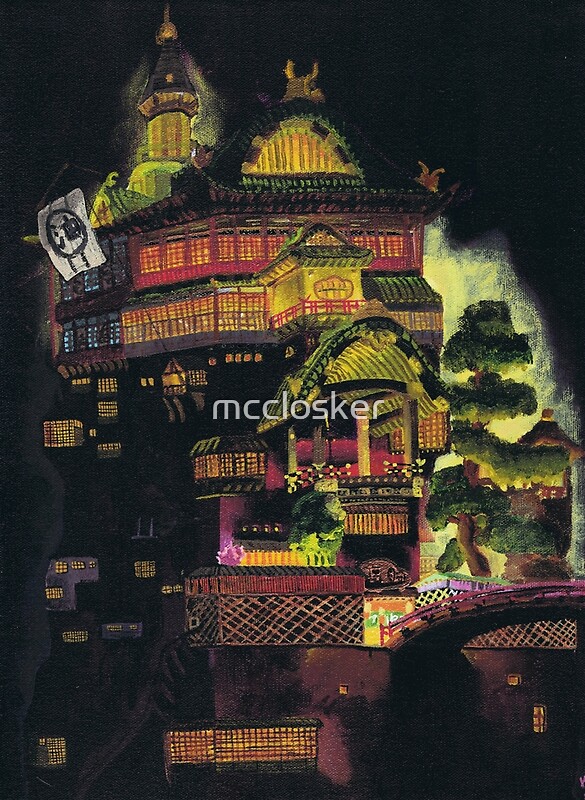Table Of Content

Kamajii seems like a rough man at first, but he aids Chihiro and Haku later in the movie. For example, he lets an injured Haku stay in the Boiler Room to recuperate. Kamajii also gives train tickets to Chihiro when she wants to return the Golden Seal to Yubaba's twin sister, Zeniba.
Tsurumaki Onsen Jinya
They also made a big effort to change the culture and get everyone speaking Japanese. In fact, to this day elderly Taiwanese people still speak Japanese fluently, as that's what they grew up speaking. I spent a good amount of time talking to one elderly Taiwanese person (in Japanese) and she was certainly a wealth of "Japanese Era" information… maybe more on that in another post. It is worth noting that generally these kami are not at all of high status.
How Much Does a Trip to Japan Cost?
But if you are more interested in ‘Spirited Away’ rather than the site historical and cultural significance then you can head to the official studio Ghibli shop right outside. Seen as a healing ritual for both the body and spirit, bathing is extremely commonplace in Japan. For those familiar with another Miyazaki classic, "My Neighbor Totoro," you might remember the scene where Satsuki and Mei unwind in the bath with their father after a long day of work. To some Americans, this ritual may seem a little odd at first, but for the Japanese it is an extremely common and social activity.
Japanese name
They are used to exchange for certain herbal remedy baths in the Bathhouse. If you’re a fan of Miyazaki films then you’re going to love this beautifully detailed model of Yubaba’s bath house from Spirited Away. The first syllables of Zeniba and Yubaba form the Japanese word sento for bathhouse.

Dogo Onsen – ‘Spirited Away’
Despite her greed, she readily offers her workers to drink following their success with the Unnamed River Spirit. The open-air bath lets you enjoy the ever-changing beauty of nature throughout the seasons while you soak. The changing room and the bathing area are integrated, preserving the architectural style of the time, and the unique design includes five different bathtubs. Matsuyama can be reached by using the JR Ishizuchi Express Train from Takamatsu (about 2.5 hours / 6,000¥).
Minecrafter builds 'Spirited Away' in stunning detail - CNET
Minecrafter builds 'Spirited Away' in stunning detail.
Posted: Wed, 15 Jan 2014 08:00:00 GMT [source]
The design of the bridge was inspired by Sekizenkan Honkan in Shima Onsen, Gunma Prefecture. The bridge in front of Sekizenkan has low red railings, and it feels like you will enter the mysterious world of Spirited Away if you hold your breath when crossing the bridge. Kamajii is the Boiler Man, and he's in charge of heating the baths in the Bathhouse. He also has (adorable!) Sootballs or Makkuro-Kurosuke that help him keep the baths hot for the guests. Haku tells Chihiro to get a job from Kamajii, but she goes with Lin instead to go to Yubaba for a job.
Takei Sanshodo is a stationery store founded in the early Meiji period, with drawers full of products covering its walls. It is worth mentioning that all the 29 guest rooms have different room designs and layouts, with some furnished as a standard Japanese-style room, and others equipped with stained glass. All the rooms are full of Japanese elements, making one want to visit again and again.
A good budget option in this neighbourhood is Cinnamon Guest House, which offers both dorms and affordable private rooms. The same area also features plenty of midrange options, like Hotel Patio Dogo as well as some more upscale Ryokans like Chaharu. This peaceful 17th century Shinto shrine features a series of crimson-coloured wooden buildings sitting in pleasant, well-manicured grounds.
There is also a set of old, unstable side stairs that lead directly into Kamajii's Boiler Room, bypassing the usual method of arriving by internal elevators. Photo Courtesy to Rocket News 24Did you know there's a real-life Spirited Away? In Taiwan, a town called Jiufen resembles much of the movie's locations. From lantern-lined paths to food vendors that make mouthwatering munchies, this city is referred to as the real-life setting of Spirited Away.
You can get to Matsuyama Castle by either walking up the hill or by taking the rope-way at the eastern end of the castle grounds (500¥ roundtrip). If you’re walking, choosing the route from the south-west is the best option, as it allows you to drop into Ninomaru Historical Garden on the way (see next entry). The temperature of the water is about 42° C (108° F), so step in slowly and don’t stay in the pool for too long (about 15 minutes tops). Definitely worth a visit if you are in Taipei for a decent length of time. Jiufen and Spirited Away certainly have connections, though I don't know how much is real inspiration and how much is "reading too much into things." Whatever it was, it was a fun trip and I highly recommend it. You can fly from Japan to Taiwan for fairly cheap, so if you have an extra week or so pop down to see what the fuss is all about.
Due to their popular and constant use, some of the baths are notorious for being extremely dirty. During Chihiro's stay as a worker, she is assigned (with Lin) to clean the biggest and dirtiest tub on the ground floor, which, according to Lin, was one that hadn't been cleaned in months. After working with computer animation, Lasseter visited Studio Ghibli in 1987.
Aside from the bridge, waterfall, entrance and side stairs, the Bathhouse has multiple side entrances and back doors that can be used to dump water outside without being seen by the customers. Haku takes Chihiro through one of these backyard routes and instructs her to enter through the Boiler Room via the side stairs to meet Kamaji. As an Academy Award winner and Japan’s highest grossing movie of all time, Hayao Miyazaki's Spirited Away has captured the hearts of viewers all over the world. Fall in love with the movie all over again, with these little-known facts.
You can pay for just the tour, a basic bath, or a more luxurious bath. Of course, the film's quality and emotional impact are hard to argue, but some viewers may have more than a few questions after their first watch. For instance, audiences from outside Japan might wonder why Miyazaki set the story in a bathhouse of all places. Yubaba is the witch that owns the Bathhouse and is consumed with her love of wealth. She's the main antagonist of the story and has the ability to steal one's name, which can't be remembered by the individual stolen from.
The annex building houses an outside garden bath, an open-air bath, a private bath surrounded by lush green scenery, and communal baths for men and women. The half open-air male communal bath is made with stone, while the open-air communal bath for females is made with cypress wood. It is located in the sixth and last station of the one-way train's route and is surrounded by uncluttered space, several other cottages and undisturbed nature. Whether this location in the realm is more active during the day or night is not mentioned or elaborated on in the film. Miyazaki said that girls of that age are tough these days, which is why he chose one as the heroine. The couple and their daughter Chihiro are selfish, ill-mannered, and devoted to their desires.
One tunnel we went through (pictured below) took us out to a tea house and beautiful view. You don't expect that kind of thing when you get into small, scary tunnels. While the tale ends up involving dragons, twin witches, and even a giant baby that's turned into a mouse, the bathhouse remains a crucial set piece throughout the film. Two pivotal scenes in the film occur in its third act, set at Hotel Kusukaru, a fictional establishment but one that is based directly on Kamikochi Imperial Hotel, located near the Japanese Alps. In one scene, a stranger with grey eyes warns of the disastrous folly of World War II and Japan’s imminent destruction. In another, aeronautical engineer Jiro Horikoshi finds the love of his life, the sickly but kind-hearted Naoko, and throws a paper plane towards her balcony.

No comments:
Post a Comment